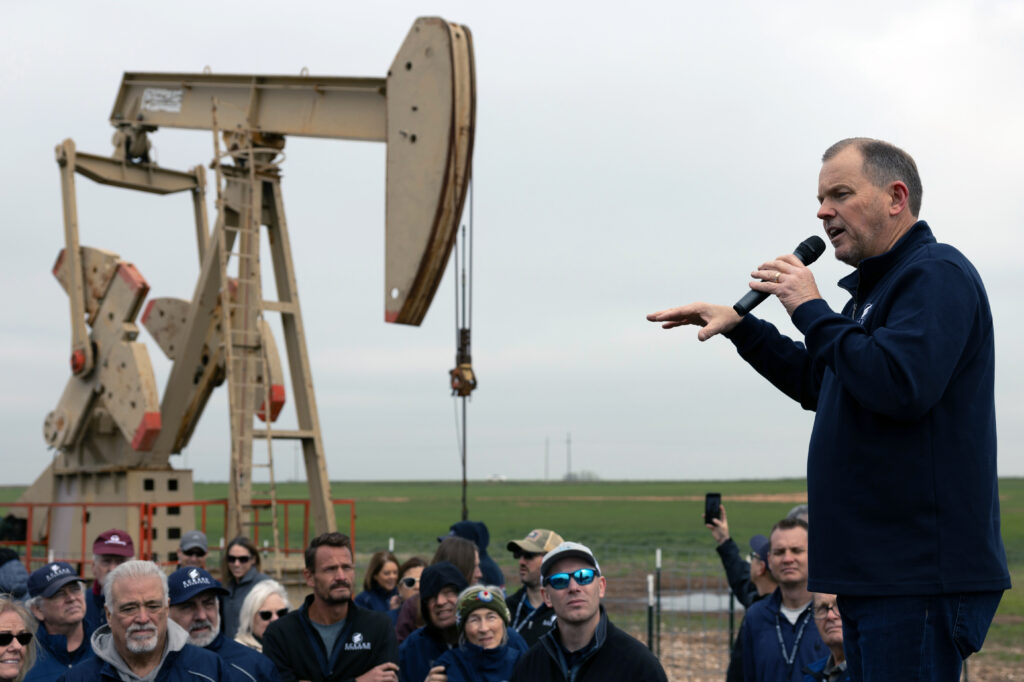This post is brought to you in partnership with Eckard Enterprises. We’re always looking to share valuable insights with our community, and while this is a sponsored post, we only feature content that we believe will be helpful and relevant to our readers. The views and opinions expressed are mostly those of Eckard Enterprises.
“In this world, nothing can be said to be certain, except death and taxes.” – Benjamin Franklin
And if you’re a doctor? Probably both show up in your inbox by Tuesday!
Jokes aside. If you’re a physician, you already know the pain of working incredibly hard only to see a massive slice of your income disappear to taxes each year.
You’ve probably done what most smart professionals do. You’ve maxed out your 401(k) or 403(b), contributed to a backdoor Roth IRA, maybe even explored some real estate for the depreciation benefits. If you’re especially proactive, you might have worked with a CPA on cost segregation or accelerated depreciation. These are all great strategies.
But here’s the issue.
Eventually, you hit a ceiling. There’s only so much you can defer. Only so much you can depreciate. Only so many buckets to fill before the IRS comes calling. And once your income starts creeping into the multiple six or seven figures, the impact of traditional strategies begins to taper off.
But what if there was a different approach? One that isn’t just about deferral, but about actual deduction against your active income in the same year?
Let’s talk about working interest ownership and why, for some reason, it’s one of the best-kept strategies for physician taxes.
1. What Working Interest Ownership Really Is
Working interest ownership is a tax-advantaged way to participate directly in domestic oil and gas production.
Think of it this way. When you buy mineral rights, you’re basically becoming a passive investor. You own the rights to a parcel of land underground and collect royalty payments when oil or gas is extracted. That’s mailbox money. Great for cash flow, not as great for upfront tax benefits.
Working interest, on the other hand, is an active stake. You’re investing capital to help fund the development of new drilling projects. Because you’re participating at the early stage and supporting domestic energy production, your investment qualifies for one of the most powerful deductions in the entire tax code.
In fact, under Section 263 of the IRS tax code, you can deduct up to 100 percent of your investment in a working interest program against your gross income, including W-2 income, in the same year the money is invested.
Let’s say you earn $2 million a year. If you invest $200,000 into a qualified working interest program, you may be able to deduct the full amount. That’s $200,000 off your taxable income, immediately. No depreciation schedules. No long wait for the benefit.
As Troy Eckard, CEO of Eckard Enterprises, explains:
“The IRS created these incentives to reward investors who take part in building the country’s energy foundation. You are helping fuel America, so you get to keep more of what you earn.”
And it’s not a gimmick. This part of the code has been around for decades because it serves a clear national interest. It encourages private capital to support the growth and stability of U.S. energy independence.
2. Isn’t Oil and Gas Investing Risky? (Not the Way It Used to Be)
It’s totally fair to be skeptical.
For many people, oil and gas investing conjures up images of risky wildcatting in the middle of nowhere. The kind where someone drills a hole in the ground and hopes they strike black gold. You wouldn’t be wrong to assume it’s speculative, outdated, or maybe even reckless.
But here’s what’s changed: technology.
In the past, drilling vertically into unknown land often meant success rates hovering around 40 percent. Investors crossed their fingers and hoped for the best. But over the past two decades, the energy industry has been completely transformed by advances in data, precision mapping, and horizontal drilling.
Today, operators can identify geologically proven formations with incredible accuracy. They know where the resources are, how deep they sit, and what the recovery potential looks like. The success rates in certain basins have gone from a coin flip to near-certainty.
Troy Eckard puts it this way:
“We used to hit four wells out of ten. Now, in the right areas, we’re nearly perfect. It’s not guessing anymore. It’s execution.”
And that’s not just marketing speak. Reputable operators today use 3D seismic imaging, decades of production history, and field-proven data to de-risk projects before a dollar is even spent on drilling.
Even more importantly, many of these firms now take an institutional approach to energy investing. Companies like Eckard Enterprises, with nearly 40 years of experience in the field, oversee every stage in-house, including geology, engineering, land acquisition, and operations. Investors aren’t left in the dark. You know exactly where your capital is going, how the project is progressing, and what the expectations are.
For physicians looking to diversify beyond stock markets and traditional real estate, energy production offers something unique. An investment backed by tangible output, not market sentiment.

3. Turning Tax Savings Into Real Monthly Cash Flow
Here’s the part that often surprises people.
Yes, the upfront deduction is powerful. But the real wealth-building potential lies in the cash flow that follows.
After drilling is complete and production begins, investors in working interest programs start receiving monthly distributions based on the sale of oil and gas extracted from the well. These aren’t quarterly stock dividends. This is cash in your account, month after month, based on a product being pulled out of the ground and sold to the market.
It’s one of the rare scenarios where an investment both reduces your taxes and builds recurring income.
Of course, cash flow depends on factors like commodity prices, production volumes, and operating costs. But when the wells perform as expected and especially when you invest through experienced operators, the model becomes one of the most tax-efficient income streams available to high earners.
Here’s how it typically plays out:
- Short-term: You invest and receive an immediate deduction, reducing taxable income for the year
- Mid-term: Within several months of drilling, production ramps up and distributions begin
- Long-term: Monthly income continues as long as the wells are producing, often for years
And these aren’t just small checks. In strong commodity markets, some investors recover their initial capital within a few years and continue to receive income long after.
Troy Eckard often reminds:
“The goal is not just to save taxes. The goal is to turn those savings into a real asset that keeps generating income.”
This isn’t about chasing quick wins. It’s about building durable, cash-flowing assets by putting your tax dollars to better use.
4. Why This Strategy Fits Especially Well for Physicians
Let’s look at the big picture.
Physicians and other high-income professionals deal with a unique set of challenges:
- Heavy tax burden
- Limited time to manage active investments
- Desire to diversify away from Wall Street
- A long-term goal of financial freedom and flexibility
Working interest ownership directly addresses each of those pain points.
Instead of spending time managing short-term rentals or trying to time the stock market, you’re leveraging a tax strategy that builds income passively. And because of the structure of the investment, you get to participate in something that serves a national purpose without having to manage anything yourself.
It’s also worth noting that this type of investment often pairs well with what many physicians are already doing. If you’ve built a portfolio of syndications, private equity, or rental properties, working interest offers diversification based on real production rather than real estate cycles or financial markets.
And when you invest through a group that’s truly aligned, putting their own capital in the same deals and offering full transparency along the way, it adds a layer of trust that’s essential when branching into alternative assets.
WANT TO LEARN MORE ABOUT OIL, GAS, AND MINERAL RIGHTS INVESTING? SUBSCRIBE AND LISTEN TO PIMD PODCAST EPISODE #282 WORKING INTERESTS IN OIL & GAS: CASH FLOW AND TAX BREAKS FOR PHYSICIANS FT. TROY ECKARD OF ECKARD ENTERPRISES

Subscribe to receive the 7 Steps you can follow to achieve Financial Freedom
If financial freedom is your goal, there’s no better time to get started than right now.
Unlock actionable steps that you can take every day to fine-tune your goals, discover your interests, and avoid costly mistakes on your financial freedom journey.
Final Thoughts: Make Every Tax Dollar Count
Let’s face it. Most people treat tax season like a one-sided transaction. You earn more, you pay more, and that’s that.
But what if your tax bill could be more than just an expense?
What if you could redirect those dollars into something that helps you build wealth and create financial flexibility?
Working interest ownership isn’t about loopholes or avoidance. It’s about participation. You’re helping support the backbone of America’s energy supply and getting rewarded for it the way the tax code was designed to do.
As Troy Eckard puts it:
“When you invest in energy, you’re not just buying oil wells. You’re buying time, freedom, and a future where your money works for you.”
Of course, like any investment, execution matters. It’s not just about finding the strategy. It’s about partnering with the right people to help you navigate it well.
That’s where a firm like Eckard Enterprises can make all the difference.
With nearly 40 years of experience in U.S. energy markets, they specialize in helping high-income professionals, especially physicians, gain access to direct working interest opportunities. Their vertically integrated model means they handle everything in-house, from geology to engineering to operations, so investors get transparency, education, and alignment every step of the way.
And the best part? They invest their own capital in the same projects, right alongside you.
If you’re curious about how this strategy could fit into your broader wealth plan, take a moment to check out what they’re doing at Eckard Enterprises. No pressure. Just straight-up information from a team that knows this space inside and out.
Because when it comes to building wealth and reducing taxes, the right opportunities and the right partners can make all the difference.
If you’re interested in more, subscribe to our newsletter for more content that will help you in and out of medicine. As always, make it happen!
Peter Kim, MD is the founder of Passive Income MD, the creator of Passive Real Estate Academy, and offers weekly education through his Monday podcast, the Passive Income MD Podcast. Join our community at the Passive Income Doc Facebook Group.
Further Reading
